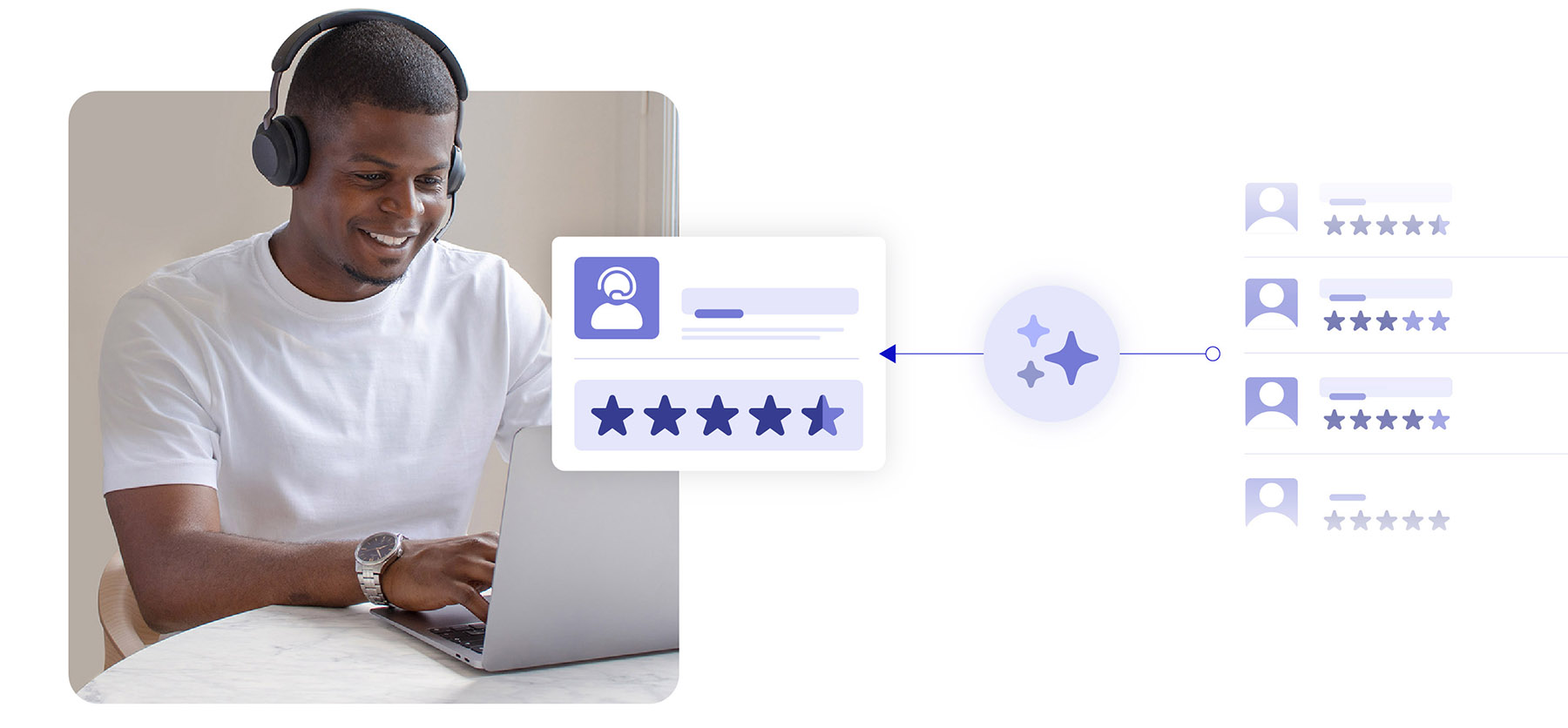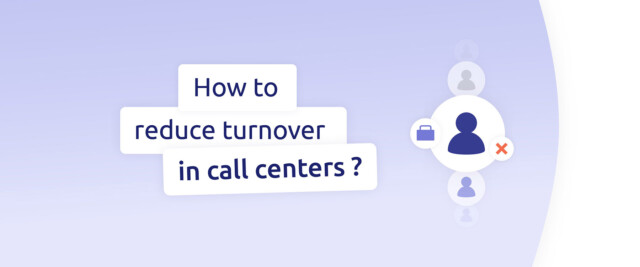The root causes of high turnover: burnout and job dissatisfaction
High turnover often stems from two closely linked issues: burnout and employee dissatisfaction.
Burnout at the core of agent turnover
Burnout, a state of emotional, mental, and physical exhaustion, affects many workers everyday across all industries.
Its symptoms are wide-ranging: chronic fatigue, sleep and appetite disorders, irritability and a sharp decline in motivation. All of these point to deep workplace distress, something that inevitably impacts productivity, engagement and agent turnover.
Work overload is the leading driver of burnout. In high-pressure environments where results represent everything, employees are very often pushed to maintain unsustainable workloads and meet unachievable targets.
Employee dissatisfaction: a key driver of excessive turnover
The other side of the issue is employee dissatisfaction. While it can be a direct consequence of burnout, it’s also influenced by several other factors—starting with a lack of recognition.
When hard work goes unnoticed but mistakes are constantly highlighted, motivation quickly starts to fade. And as motivation drops, agent turnover tends to rise.
Workplace conditions also play a major role in how satisfied employees feel. Outdated tools, inefficient workflows, or a lack of modern technology. These daily frustrations create a sense of discouragement and helplessness.
Another common cause of dissatisfaction is the lack of career growth and upskilling opportunities. Employees want to feel like they’re moving forward, learning, and being faced with new challenges. Without opportunities to grow, their work will likely start to feel meaningless, consequentially pushing agent turnover even higher.
New technologies: a powerful ally in reducing agent turnover
New digital solutions offer a practical answer to agent turnover in contact centers. Workflow automation, internal communication tools, dashboards displaying key KPIs, and centralized customer data all serve as powerful levers to boost long-term team performance and efficiency.
Automating repetitive tasks: a cure for stress and frustration

By automating routine tasks, agents can focus on higher-value work. Digital tools not only lighten the workload, they also enhance agent performance and skill development by completing tasks faster and with fewer errors.
The integration of artificial intelligence into digital platforms is especially promising for contact centers. Features like next-best-action suggestions, satisfaction analysis, and automatic call summaries offer real value by simplifying day-to-day operations for agents.
Automation also makes it easier for customers to reach the right agent, reducing the time spent on call routing. This smoother path improves customer experience and makes interactions more engaging for agents, too.
Among the most impactful automation tools are AI-powered real-time assistance features. These tools analyze live interactions, suggest relevant responses, and generate call summaries on the fly, freeing up agents to fully focus on the customer experience.
Interactive Voice Response (IVR) systems also help reduce pressure by handling and filtering routine inquiries. Low-value requests are managed automatically, allowing agents to concentrate on more complex issues presented by the customers.
By automating specific tasks, these tools help improve working conditions for agents, and in doing so, reduce the risk of turnover across the board.
Training and support: another key lever to reduce turnover
Beyond tools and technology, it’s essential to provide agents with opportunities for growth and development. Ongoing skill-building is a powerful way to combat dissatisfaction, and the turnover that often follows.
Here are a few best practices to support agent development:
- Offer personalized training paths tailored to each agent’s profile, so everyone can develop at their own pace.
- Use a mix of engaging learning formats (e-learning, hands-on workshops, one-on-one coaching).
- Provide on-demand access to educational resources to encourage self-learning.
- Promote peer-to-peer knowledge sharing and mentoring.
- Set up regular performance check-ins and define individual development goals.
In parallel, tools like Quality Monitoring can help track agent performance in detail. Based on these insights, supervisors can deliver personalized, constructive feedback to help agents continuously improve.
This training-focused approach strengthens agents’ sense of confidence and control—two essential drivers of long-term engagement. On the flip side, companies that neglect employee development often face much higher turnover rates.
Fostering collaboration and communication to build stronger teams
In a call center, encouraging collaboration and communication among team members is key to preventing excessive turnover.
Here are a few proven strategies:
- Use internal communication tools that are intuitive and accessible to everyone.
- Promote regular check-ins between agents and their supervisors.
- Create spaces where teams can share knowledge, tips, and best practices.
- Organize informal team-building moments to strengthen group cohesion.
- Make sure important information flows smoothly across the organization.
Technology platforms, like those offered by Diabolocom, can play a critical role in supporting these efforts.
In the end, a positive team culture goes a long way in reducing turnover and keeping agents engaged.
Real-time feedback to keep agents motivated daily

Delivering timely and meaningful feedback to your agents is essential. It’s one of the most effective ways to keep them engaged long term and support continuous skill development.
Too often, companies rely solely on traditional post-call satisfaction surveys, which are rarely enough to drive real improvement.
In recent years, more effective approaches have emerged. Quality Monitoring tools, for example, offer real-time and in-depth analysis of customer interactions. Every exchange is reviewed to highlight strengths and pinpoint areas for improvement.
Supervisors can use these insights to provide personalized coaching and ongoing support. When used strategically, these tools help prevent disengagement and fatigue, two major contributors to agent turnover in contact centers.
Conclusion
Turnover is an ongoing challenge for companies operating contact centers. But with the right technology in place, businesses can create an environment that boosts agent performance while easing their workload.
From workflow automation, to centralized customer databases and performance monitoring tools backed by actionable KPIs—today’s digital solutions are designed to support both efficiency and employee well-being.
Modern CCaaS platforms offer a comprehensive suite of features and native integrations that help you hit your business goals while providing your agents with a powerful, omnichannel tool that promotes continuous learning and growth.
Want to learn how to reduce turnover and build a more positive agent experience?
Talk to one of our experts and discover how our solutions can help your teams thrive.
Want to boost team loyalty even further?



